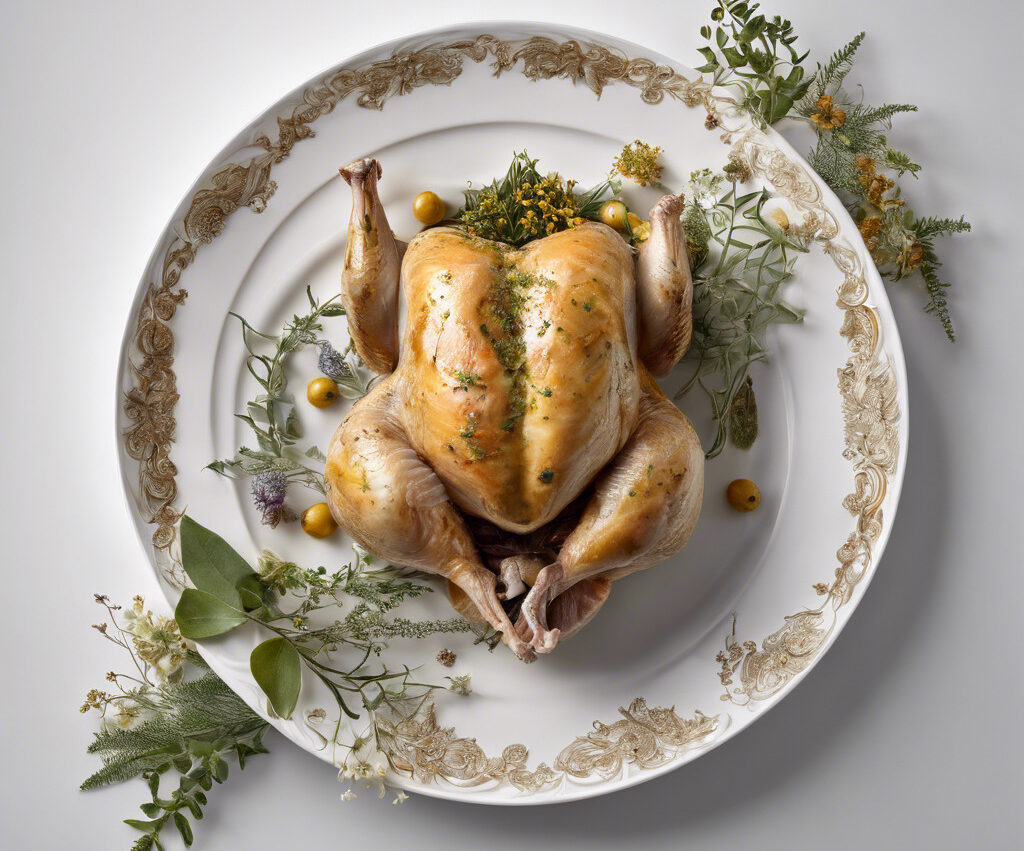Have you ever wondered if leftover fish is still good to eat? Well, fret no more! In this article, we will explore the topic and uncover the truth behind whether or not you should savor those remaining portions of fish from last night’s dinner. Whether you have a plate of flaky white fish or a piece of flavorful salmon, we will guide you through the considerations to help you make an informed decision. So, get ready to satisfy your curiosity and discover if you can indulge in that delicious leftover fish.
Deterioration of Fish Quality

Factors Contributing to Fish Deterioration
When it comes to the quality of fish, there are several factors that can contribute to its deterioration. One of the primary factors is time. As fish sits out at room temperature, it can quickly become a breeding ground for bacteria, leading to spoilage and an unpleasant taste. Another factor is improper storage. If fish is not stored at the appropriate temperature or in the right conditions, it can deteriorate more rapidly. Additionally, the type of fish and its freshness at the time of purchase can also affect its overall quality and how quickly it deteriorates.
Effects of Deteriorated Fish on Health
Consuming deteriorated fish can have adverse effects on your health. Fish that has gone bad may contain harmful bacteria and toxins that could lead to food poisoning. Symptoms of food poisoning may include nausea, vomiting, diarrhea, and stomach cramps. In some cases, consuming deteriorated fish can even lead to more severe illnesses such as botulism or salmonella poisoning. It is crucial to prioritize the freshness and quality of fish to avoid any potential health risks.
Extent of Fish Deterioration
Short-Term Deterioration
Fish can begin to deteriorate shortly after it is caught or purchased. Within a short period, the texture may become slimy and the smell may turn foul. This indicates that the fish is no longer fresh and should not be consumed. Short-term deterioration is a significant concern as it can occur even if the fish has been stored properly but left unused for too long. It is important to be aware of the signs of deterioration to ensure the fish is fresh and safe to eat.
Long-Term Deterioration
If fish is not stored correctly or if it is left unused for an extended period, it can experience long-term deterioration. This typically includes freezer burn, which affects the texture and flavor of the fish. Freezer burn occurs when moisture is lost from the fish due to improper packaging or storage conditions. The result is a dry and tough texture, as well as a loss of flavor. While fish with freezer burn is technically still safe to eat, it may not provide an enjoyable culinary experience.
Exceptions to Deteriorated Leftover Fish
Ideal Storage Conditions
While fish can deteriorate quickly, there are certain storage conditions that can extend its freshness. If fish is kept in a refrigerator at a temperature of 40°F (4°C) or below, it can generally remain safe to consume for up to two days. It is essential to store the fish in an airtight container or plastic wrap to prevent moisture loss and the absorption of odors from other foods. By following these ideal storage conditions, you can prolong the freshness of leftover fish and minimize the risk of deterioration.
Specific Fish Types
Not all fish deteriorate at the same rate. Some types of fish, such as salmon and tuna, have a higher oil content, which allows them to stay fresh for more extended periods. These types of fish generally have a longer shelf life than leaner fish varieties. However, it is still crucial to observe the signs of deterioration, even with types of fish that tend to stay fresh for longer. Always trust your senses and prioritize safety when determining whether leftover fish is suitable for consumption.
Cooked vs. Raw Leftover Fish
Cooked leftover fish has a slightly longer shelf life compared to raw fish. Properly cooked fish can be stored for up to three to four days in the refrigerator before it begins to deteriorate. Cooking kills bacteria that may have been present in the raw fish, prolonging its freshness. However, it is important to note that reheating cooked fish multiple times can further contribute to its deterioration. It is recommended to consume cooked leftover fish within a day or two to ensure optimal quality and taste.
Methods to Check Fish Freshness
Appearance and Texture
Examining the appearance and texture of leftover fish can provide valuable insight into its freshness. Fresh fish should have clear, bright eyes, shiny scales, and firm flesh. If the fish appears dull or has sunken eyes, it may indicate that it is past its prime. Additionally, fresh fish should have a smooth and moist texture. If the flesh appears slimy or sticky, it is a sign of deterioration and should not be consumed.
Smell and Odor
Your sense of smell is an excellent tool for determining whether leftover fish is still fresh. Fresh fish should have a mild, oceanic smell. If the fish emits a strong, pungent, or fishy odor, it is an indication that it has deteriorated and should be discarded. Trust your nose and if in doubt, it is best to err on the side of caution and avoid eating fish with a questionable smell.
Expiration Date
If you are unsure about the freshness of leftover fish, checking the expiration date can provide valuable guidance. While the expiration date is not the sole indicator of fish quality, it can serve as a helpful reference point. Be sure to adhere to the expiration date, and if the fish has exceeded this timeframe, it is best to discard it to prevent any potential health risks.
Safe Consumption of Leftover Fish
Proper Storage Techniques
To ensure the safe consumption of leftover fish, it is crucial to follow proper storage techniques. After the fish has been cooked, promptly store it in an airtight container and place it in the refrigerator at a temperature below 40°F (4°C). If you plan to keep the fish for more than a day, consider freezing it to preserve its freshness for an extended period. Additionally, avoid storing fish with other strong-smelling foods, as it can absorb unwanted odors.
Reheating Precautions
When reheating leftover fish, it is essential to take precautions to maintain its quality and safety. Avoid reheating fish multiple times, as this can contribute to further deterioration. Ensure that the fish reaches an internal temperature of at least 145°F (63°C) when reheating to kill any potential bacteria. By following these reheating precautions, you can enjoy leftover fish while minimizing the risk of foodborne illnesses.
Important Consideration for Vulnerable Groups
While leftover fish can be safe for consumption, it is important to consider certain groups’ vulnerability, such as pregnant women, young children, and individuals with weakened immune systems. These groups are more susceptible to foodborne illnesses and may need to exercise extra caution when consuming leftover fish. It is advisable for vulnerable individuals to avoid consuming leftover fish altogether or consult with a healthcare professional for personalized recommendations.
Creative Ways to Use Leftover Fish
Fish Tacos or Sandwiches
Leftover fish can be transformed into delicious fish tacos or sandwiches. Simply flake the fish into smaller pieces and layer it on a tortilla or bread with your favorite toppings and condiments. Add some fresh vegetables, a squeeze of lime, and a drizzle of sauce for a flavorful and satisfying meal. The combination of textures and flavors will make the leftover fish taste fresh and exciting again.
Fish Chowder or Soup
Leftover fish can be a fantastic addition to a hearty chowder or soup. Use the fish as the base for your broth and complement it with vegetables, herbs, and seasonings of your choice. Simmer it gently until all the flavors meld together, creating a comforting and nutritious meal. The shape and texture of the fish will add a delightful element to your chowder or soup, making it a delightful way to enjoy leftover fish.
Fish Cakes or Fish Fritters
Transforming leftover fish into delectable fish cakes or fritters is another excellent option. Combine flaked fish with mashed potatoes, herbs, and spices to create flavorful patties. Fry them until golden brown and serve with a dipping sauce or alongside a fresh salad for a complete meal. The crispy exterior and moist interior of the fish cakes or fritters will bring new life to the leftover fish, leaving you satisfied and impressed with your culinary creations.
Tips for Enhancing Flavor and Texture
Marinating Leftover Fish
Marinating leftover fish is a great way to enhance its flavor and texture. Create a simple marinade using ingredients such as citrus juices, herbs, spices, and olive oil. Allow the fish to marinate for at least thirty minutes to an hour before cooking or reheating. This will infuse the fish with delicious flavors, adding depth and vibrancy to each bite.
Adding Sauces or Dressings
Another way to enhance the flavor of leftover fish is by adding sauces or dressings. Drizzle a homemade or store-bought sauce over the fish to elevate its taste. Choose from a variety of options, such as tartar sauce, aioli, teriyaki sauce, or vinaigrette, depending on your preferences. The sauces will not only add moisture to the fish but also bring complementary flavors that make each bite enjoyable.
Combining with Fresh Ingredients
Incorporating fresh ingredients is an excellent technique to revive the texture and flavor of leftover fish. Toss it with crisp lettuce, ripe tomatoes, and crunchy cucumbers to create a refreshing salad. Alternatively, top a bed of mixed greens with flaked fish, avocado slices, and a zesty dressing for a nutritious and satisfying meal. The combination of fresh ingredients with the fish will provide a pleasant contrast and enhance your overall dining experience.
Alternative Uses for Leftover Fish
Feeding Pets
If you have pets, leftover fish can serve as a tasty treat or addition to their regular meals. Cooked fish without any seasonings or additives can be a healthy and protein-rich option to add to your pet’s diet. Be sure to consult with your veterinarian to determine the appropriate amount and frequency of serving fish to your furry friends.
Composting
If leftover fish cannot be consumed or repurposed, consider composting it. Fish contains valuable nutrients that can enrich your compost pile and contribute to healthy soil. Bury the fish deep in your compost pile or use a specialized composting system to prevent any unwanted odors or pests. Composting allows you to minimize waste and recycle the nutrients from leftover fish in an environmentally friendly manner.
Fish Stock
Utilize leftover fish to make a flavorful and versatile fish stock. Simmer the fish bones, skin, and trimmings with aromatic vegetables, herbs, and water to create a rich and fragrant stock. The fish stock can be used as a base for soups, stews, or sauces, adding depth and complexity to your culinary creations. By repurposing leftover fish into fish stock, you can maximize its potential and reduce food waste.
Prevention of Leftover Fish
Portion Control
One effective way to prevent leftover fish is through portion control during meal preparation. Assess the amount of fish needed based on the number of servings required and try to avoid cooking excessive amounts. By planning and cooking precisely what you need, you can minimize the chances of having leftover fish. This not only reduces food waste but also ensures that each serving is fresh and enjoyable.
Proper Meal Planning
Planning your meals in advance can help prevent leftover fish. Consider incorporating fish into your meal plan when you know you will have the time and appetite to fully enjoy it. Coordinate your recipes to utilize any remaining fish from previous meals, ensuring that it does not go to waste. By being thoughtful and intentional with your meal planning, you can reduce the chances of having leftover fish.
Reducing Food Waste
Preventing leftover fish is part of a larger effort to reduce food waste. Implementing strategies such as making a grocery list, checking expiration dates, and properly storing perishable foods can help minimize waste. Being mindful of portion sizes, utilizing leftovers creatively, and composting when appropriate are all essential steps towards reducing food waste and its associated environmental impact.
Summary
While the deterioration of fish quality is a concern, there are ways to minimize its effects and ensure safe consumption. Factors such as time, storage conditions, and the type of fish all contribute to its deterioration. By understanding the signs of deterioration and implementing proper storage techniques, you can prolong the freshness of leftover fish. Additionally, utilizing leftover fish creatively and enhancing its flavor and texture can provide delicious and satisfying meals. Awareness of alternative uses and prevention methods can further reduce food waste. Prioritize safety, freshness, and sustainability to make the most of leftover fish and maximize your culinary experiences.







